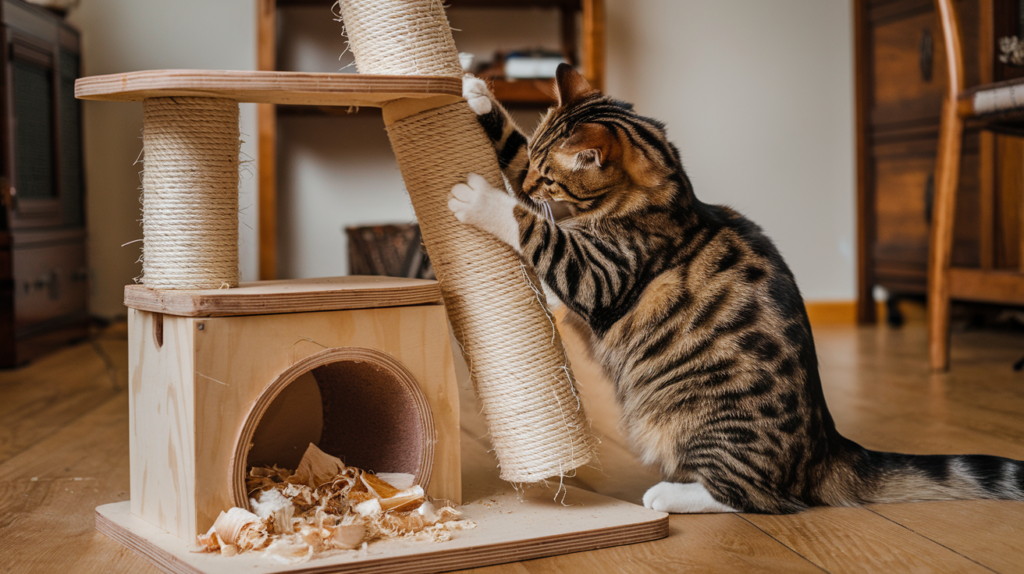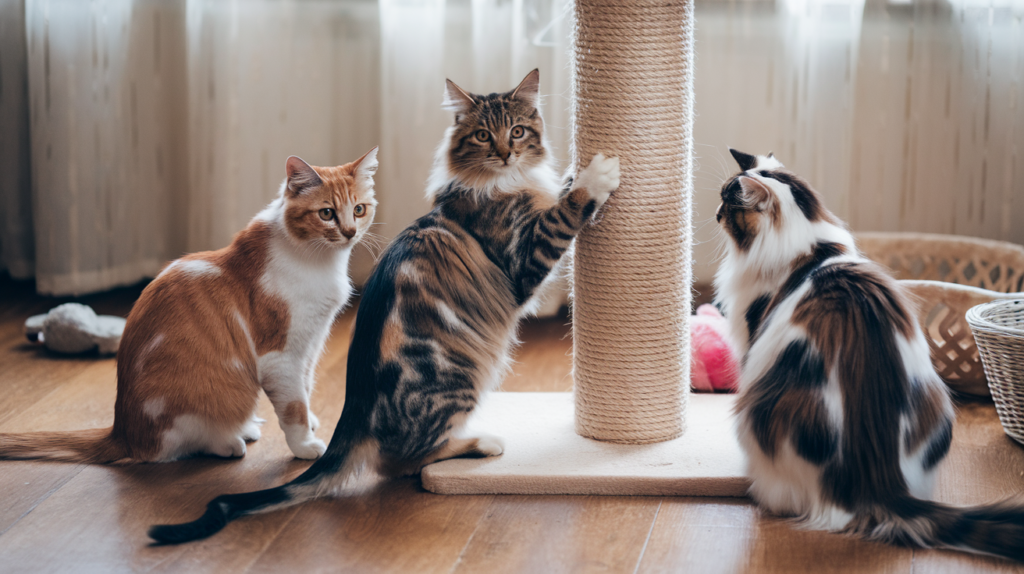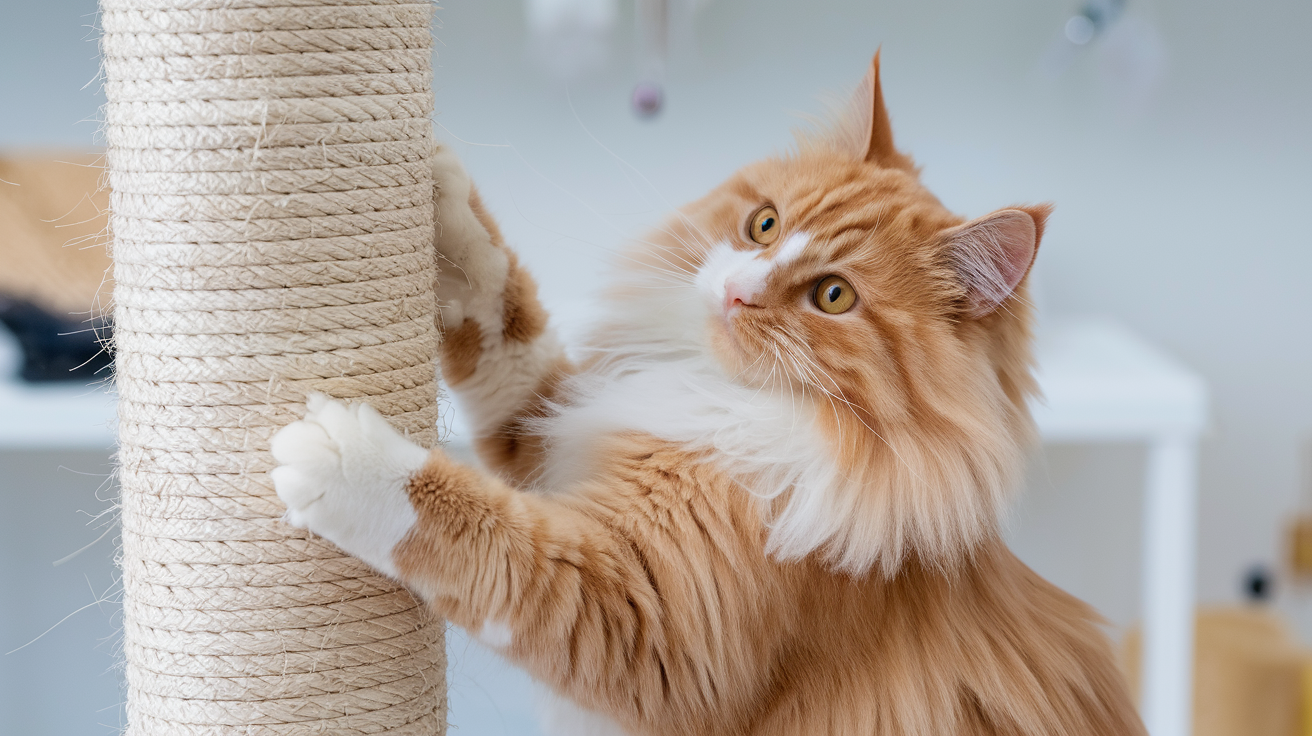As a cat behavior specialist and long-time cat owner, I’ve seen countless frustrated pet parents dealing with shredded furniture and torn carpets. But here’s the good news: with the right approach and a bit of patience, you can successfully train your cat to use a scratching post. In this comprehensive guide, I’ll share proven techniques that have helped thousands of cats redirect their natural scratching instincts to appropriate surfaces.
Why Your Cat Needs a Scratching Post
Before we dive into training techniques, let’s understand why cats scratch. It’s not just about sharpening their claws – scratching serves multiple purposes:
- Marking territory through scent glands in their paws
- Stretching muscles and maintaining flexibility
- Removing old claw sheaths
- Stress relief and emotional expression
- Exercise and physical activity
Understanding these natural behaviors helps us better address our cats’ needs and makes training more effective.
Choosing the Perfect Scratching Post
Your training success largely depends on selecting the right scratching post. Here’s what to consider:
Height and Stability
A scratching post should be tall enough for your cat to fully stretch – typically at least 32 inches high. Remember, cats love to reach up and pull down, so stability is crucial. Look for posts with a heavy, wide base that won’t wobble or tip over.
Material Matters
Different cats prefer different scratching surfaces. Here are the most popular options:
| Material | Pros | Cons | Best For |
|---|---|---|---|
| Sisal Rope | Extremely durable, great texture | Can be rough on sensitive paws | Most adult cats |
| Cardboard | Affordable, widely accepted | Less durable, needs replacement | Kittens, gentle scratchers |
| Carpet | Soft, familiar texture | Can confuse cats about household carpets | Senior cats |
| Natural Wood | Long-lasting, authentic feel | May splinter over time | Outdoor cats |

Step-by-Step Training Guide
1. Strategic Placement
Position matters more than you might think. Place the scratching post:
- Near your cat’s favorite resting spots
- In high-traffic areas of your home
- Close to furniture they currently scratch
- In both social and private spaces
2. Make It Irresistible
I’ve found these techniques particularly effective:
- Rub organic catnip into the scratching surface
- Dangle interactive toys around the post
- Praise and reward your cat when they show interest
- Use Feliway® pheromone spray to create positive associations
3. Demonstrate and Encourage
Yes, you read that right – show your cat how it’s done! I often:
- Gently take their paws and make scratching motions on the post
- Use toys to encourage climbing and scratching
- Create playful games around the post
- Reward any interaction with treats and praise

Troubleshooting Common Challenges
When Your Cat Ignores the Post
If your furry friend seems uninterested, try:
- Moving the post to a new location
- Adding multiple posts throughout your home
- Trying different materials
- Making the current scratching spots less attractive
Protecting Furniture During Training
While your cat learns, protect your furniture by:
- Using double-sided tape on favorite scratching spots
- Covering furniture with aluminum foil temporarily
- Providing alternative scratching options nearby
- Using citrus-scented deterrents (most cats dislike citrus)
Maintaining Success
Once your cat regularly uses their post:
- Keep it clean and stable
- Replace posts when they become overly worn
- Consider adding new posts in different locations
- Continue positive reinforcement
Product Recommendations
Based on my experience and client feedback, here are some top picks:
Best Overall
The SmartCat Pioneer Pet Ultimate Scratching Post offers the perfect combination of height, stability, and durability. Its 32-inch height and premium sisal covering make it a favorite among both cats and owners.
Budget-Friendly Option
The Frisco 33.5-in Sisal Cat Scratching Post provides excellent value without compromising on essential features.
Premium Choice
The Vesper Cat Furniture V-High Base combines modern aesthetics with functionality, perfect for style-conscious pet parents.
FAQ: Your Top Questions Answered
Q: How tall should a cat scratching post be?
A: For most adult cats, aim for at least 32 inches to allow full stretching. Larger breeds may need even taller posts.
Q: What material is best for a cat scratching post?
A: Sisal rope is generally the most durable and popular choice, though some cats prefer cardboard or carpet. Consider offering multiple options.

Final Thoughts
Training your cat to use a scratching post requires patience, consistency, and understanding. Remember that every cat is unique – what works for one might not work for another. Stay positive, keep experimenting, and celebrate small victories along the way.
This article contains affiliate links, meaning I may earn a commission if you click through and make a purchase at no extra cost to you.

